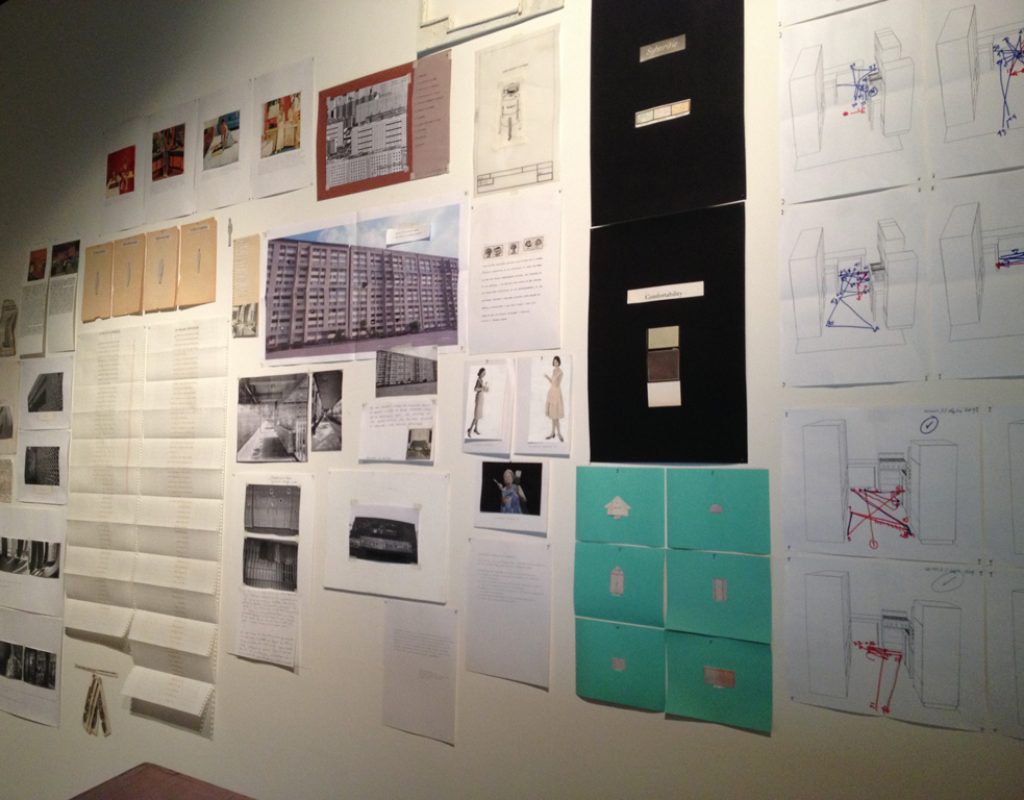
Lo Doméstico. Patrones diseños y artefactos
Technical Data Sheet:
With the support of
DETALLES DEL PROYECTO
Lo Doméstico. Patrones diseños y artefactos domésticos (The Domestic. Patterns, designs and domestic artifacts) is an artistic project based on the analysis of the domestic space from the modernization policies in Mexico in the 1950s and its reflection in the current context.
This project addresses the utopia of the “culture of housing”, as a site of failed modernities, it is a re-reading of domestic architecture, of its specialty and also of the real ways to inhabit it. A questioning of technological modernity and its links with utopia.
Through the collection of voices, opinions, and the observation of physical routines and habits, a record was made of movement trajectories and routes of the inhabitants of a series of apartments (a combination of time and linear space measurements), a diary of reiterations, of precise and unique gestures that constitute the very subjectivity of the immediate environment. The research resulted in diagrams of efficiency, as well as in the reconfiguration of static and homogeneous patterns: graphs, drawings and plane approximations towards three-dimensional reflections to conceive the ideal spaces in the house.
The starting point was the Centro Urbano Presidente Alemán (CUPA) (1949), and the Unidad Habitacional Nonoalco Tlatelolco (1962), the largest social housing complex in the city, both built by Mario Pani (1911-1993).
This graphic and anthropological analysis was based on collaborative practices with inhabitants of the two urban centers built by Pani 13 years apart, in order to establish a confrontation of their current relationship with the domestic and the patterns of operation that were tried to be implemented during modernity.
Each apartment became a laboratory of measurement and experimentation, a “stage” for mapping, recording and documenting different modes of use of domestic space, the technological devices used in the home such as household appliances, and the narratives of the private in relation to the inhabited space.
DETALLES DEL PROYECTO
DETALLES DEL PROYECTO
DETALLES DEL PROYECTO
DETALLES DEL PROYECTO
DETALLES DEL PROYECTO
DETALLES DEL PROYECTO